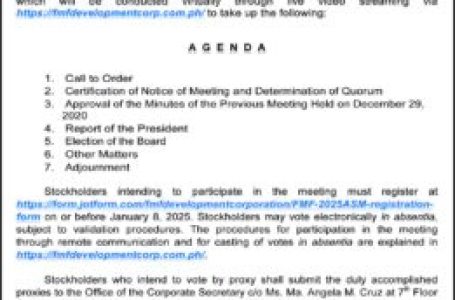Eala advances to Final Four of Workday Canberra International
Navigating transfer pricing in 2024: Key insights and developments

Today marks the last day of 2024. As we bid farewell to 2024, let me wrap up the key topics and insights discussed in our monthly Let’s Talk TP articles throughout the year. From the implications of BEPS Pillar 2 to the intricacies of intercompany financial transactions, we explore the critical issues surrounding transfer pricing.
BEPS PILLAR 2 AND THE TAXATION OF PHL ENTITIES OF MNESEarly this year, we released an article about the Base Erosion and Profit Shifting (BEPS) Pillar 2 framework. The framework has evolved to address global tax challenges, particularly with the rise of digitalization. BEPS 2.0 focuses on ensuring profits are taxed where economic activities occur. Pillar 2, which includes the global anti-base erosion (GloBE) rules and the subject-to-tax rule (STTR), aims to impose a global minimum tax rate.
Under the GloBE rules, the Organisation for Economic Co-operation and Development (OECD) has recommended that the income inclusion rule (IIR) and qualified domestic minimum top-up tax (QDMTT) become effective in 2024, while the undertaxed profits rule (UTPR) becomes effective in 2025. Meanwhile, STTR, being a treaty-based rule, can only be implemented through bilateral negotiations and amendments to individual tax treaties or as part of a multilateral convention.
The impact on Philippine entities includes potential changes in tax rates and the need for local adoption of OECD guidelines. As countries begin implementing these rules, Philippine entities must prepare for the potential implications on their tax strategies and compliance requirements. The adoption of these guidelines will require significant adjustments in tax planning and reporting for MNEs operating in the Philippines.
TRANSFER PRICING AND INTER-COMPANY LOANSPreviously, we touched upon the financial transactions between related parties. The key message of the article is to ensure that intercompany financial transactions are at arm’s length. The Bureau of Internal Revenue (BIR) and OECD provide guidelines for testing the arm’s length nature of interest payments. Key considerations include delineating financial transactions, benchmarking interest rates, and assessing debt capacity to ensure compliance and avoid tax adjustments. The guidelines from the BIR and OECD emphasize the importance of accurately characterizing financial transactions and determining whether they should be treated as debt or equity, which has significant tax implications. Proper documentation and analysis are essential to support the arm’s length nature of these transactions and to defend against potential tax authority challenges.
TRANSFER PRICING AND CASH POOLINGCash pooling, a popular method for efficient cash management among MNEs, involves either the physical or notional pooling of cash balances. Transfer pricing implications include accurately delineating transactions and appropriately remunerating cash pool leaders and members. Setting up an arm’s length cash pooling arrangement requires careful analysis of the transaction’s characterization, and the functions, risks, and rewards of all parties involved. The OECD guidelines highlight the need for proper documentation and analysis to ensure that cash pooling arrangements are compliant with transfer pricing rules. This includes understanding the economic substance of the transactions and ensuring that the remuneration reflects the functions performed and risks assumed by each participant.
REMEMBERING THE IMPORTANCE OF TRANSFER PRICINGIn observance of All Souls’ Day in November, we published an article about remembering the importance of transfer pricing. Transfer pricing rules are designed to prevent profit shifting and ensure multinational companies pay their fair share of taxes. These regulations are rooted in the need for fairness and equity.
Compliance involves submitting BIR Form No. 1709 and maintaining detailed transfer pricing documentation (TPD). This includes keeping records of intercompany transactions and performing thorough analyses to justify arm’s length pricing. Vigilant documentation is crucial to prepare for scrutiny from tax authorities.
Non-compliance can lead to fines, penalties, and reputational damage. Advance Pricing Arrangements (APAs) provide certainty and clarity, helping businesses navigate complex transfer pricing issues.
TRANSFER PRICING RULES FOR BPO COMPANIESOur last article delved into Business Process Outsourcing (BPO) companies. The CREATE MORE Act has significantly impacted the IT-BPO sector, introducing lower corporate income tax rates and flexible work-from-home arrangements. BPO companies must ensure their operations align with transfer pricing rules and maintain adequate documentation. Key concepts include the arm’s length principle, entity characterization, and the selection of appropriate transfer pricing methodologies (CUP, CPM, TNMM). The article discusses the specific challenges faced by BPO companies and the importance of thorough documentation and analysis to support their transfer pricing positions. BPO entities must carefully analyze their functions, assets, and risks to determine the appropriate transfer pricing method and ensure that their pricing reflects the economic reality of their operations.
TRANSFER PRICING HANDBOOKIn December, we released our transfer pricing handbook, both physical and digital copies, to the public for free. The handbook aims to help taxpayers become aware of the basic concepts of transfer pricing, compliance requirements, and transfer pricing audit guidelines in the Philippines. The handbook is structured in a question-and-answer format for ease of understanding.
TAKEAWAYSAs we conclude 2024, it is evident that transfer pricing remains a dynamic and complex area of taxation. The articles published throughout the year have highlighted the critical need for taxpayers to stay informed and compliant with evolving regulations. By understanding and addressing the various transfer pricing issues discussed, businesses can better navigate the challenges and opportunities in the global tax landscape. As we look forward to 2025, continued vigilance and proactive management of transfer pricing practices will be essential for ensuring fair and transparent transactions.
Let’s Talk TP is an offshoot of Let’s Talk Tax, a weekly newspaper column of P&A Grant Thornton that aims to keep the public informed of various developments in taxation. This article is not intended to be a substitute for competent professional advice.
Nikkolai F. Canceran is a partner from the Tax Advisory & Compliance division of P&A Grant Thornton, the Philippine member firm of Grant Thornton International Ltd.










![[B-SIDE Podcast] The rise of an entrepreneurial mindset among Filipino freelancers](https://savvypeoplesociety.com/wp-content/uploads/2025/01/B-Side-Art-Payoneer-300x300-UWf0gJ-455x300.jpeg)